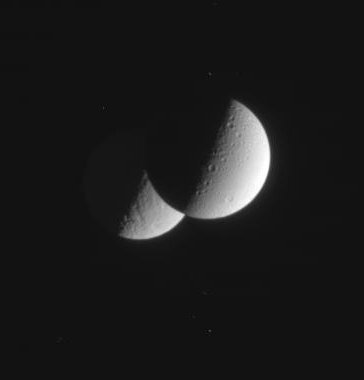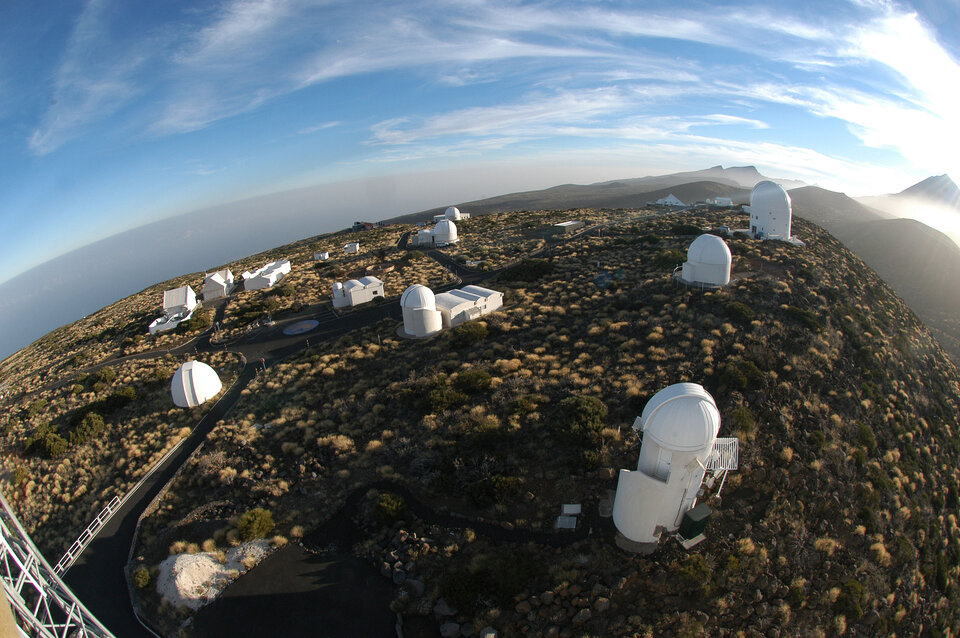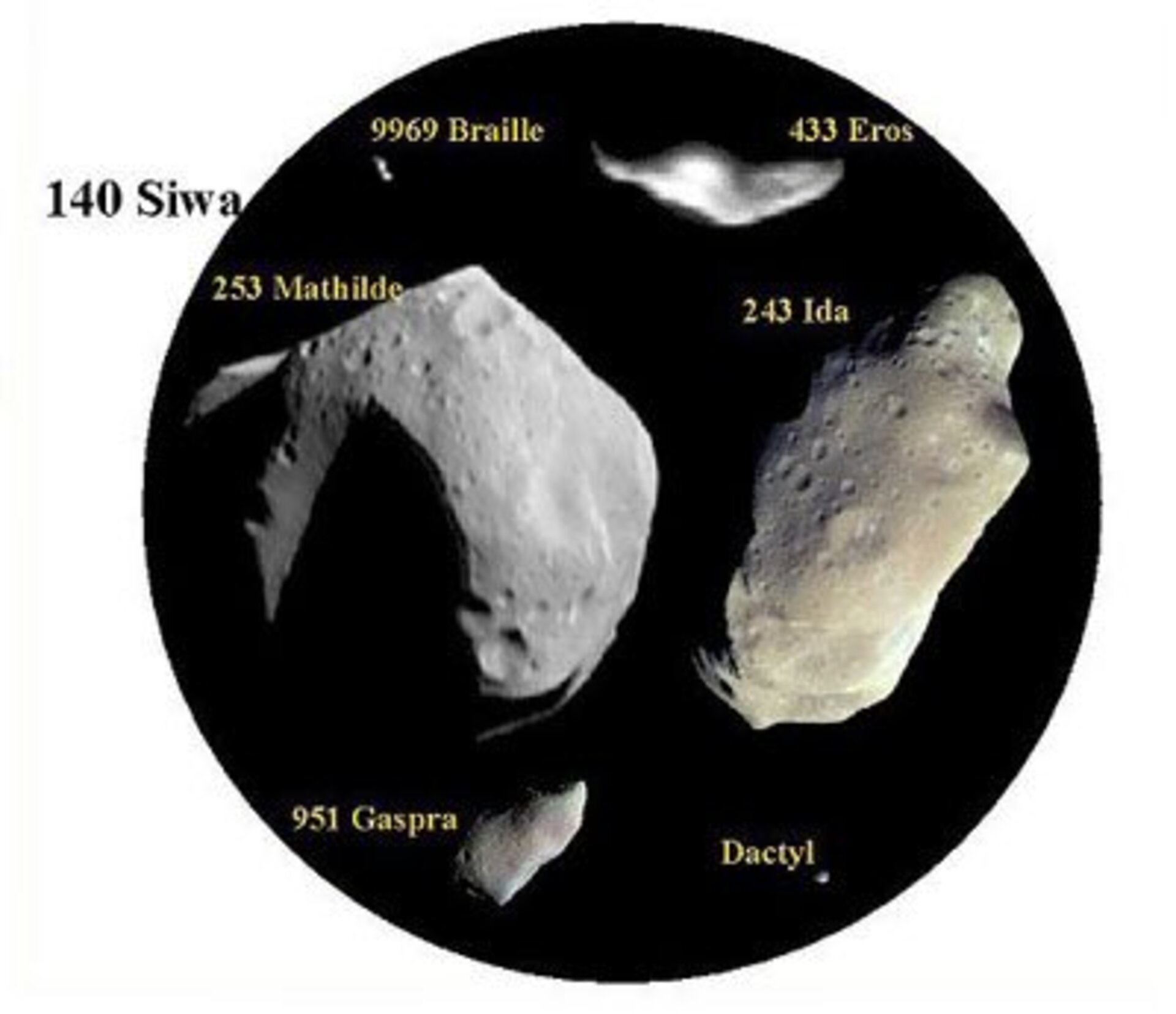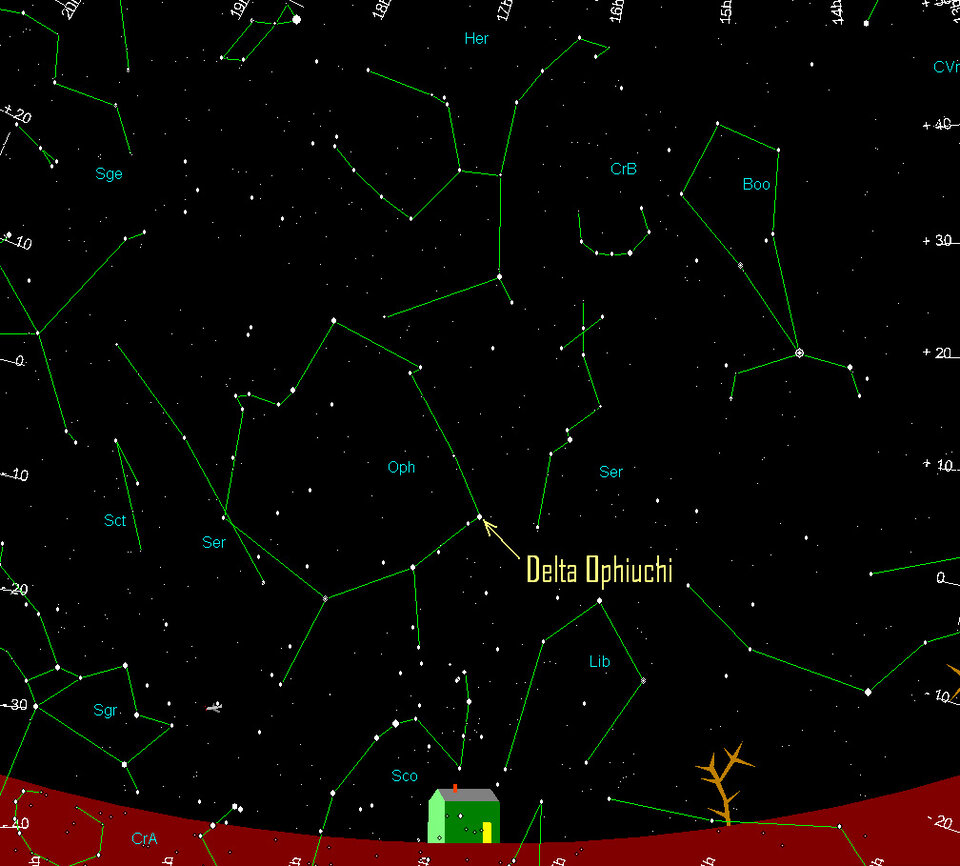Watch while an asteroid eats a star
In a rare event next Thursday, skywatchers will be able to see an asteroid briefly block out the light from a star as it passes in front. It may be the only asteroid 'occultation' this century observable with the naked eye.
Everybody is familiar with a solar eclipse, when our Moon passes in front of the Sun and blocks its light for several minutes.
A similar situation can happen with asteroids, the Sun-orbiting, rocky or metallic objects that are left over from the formation of the Solar System or were formed by collisions between other asteroids.
In total, we know of about 400 000 of these dark bodies, which range in size from a few hundred kilometres to just a few metres. The smaller ones are hard to detect.
While an asteroid is far too small to cover the Sun, one will occasionally move directly in front of one of the many stars in the night sky and block its light from our view, causing a stellar eclipse or occultation.
Since asteroids move relatively fast, these events typically last just a few seconds. Normally the occulted star is so faint the event can only be seen via telescope.
Roma to pass in front of Delta Ophiuchi

During the night of 8/9 July, however, a star that is visible to the naked eye, Delta Ophiuchi (the fourth-brightest star in the constellation Ophiuchi), will be occulted by asteroid Roma, which has a diameter of about 50 km.
This means the occultation will be visible only along a path about 50 km wide, crossing central Europe, Spain and the Canary Islands (scroll down for details on how to observe this event).
Catching a glimpse
Since asteroids, with very few exceptions, are too small to be resolved with ground-based telescopes, asteroid occultations are the only direct way of measuring the size of such an object. When several observers record such an event, using video cameras with precise timing, the times when they see the occultation help to measure the shape of the asteroid.
Since we know the speed of the asteroid, the duration of the occultation can be converted directly to a length. This allows scientists to reconstruct the size and shape of the object.
ESA's space hazards programme seeks asteroids
Asteroids – in particular those coming close to Earth – are the focus of the Near Earth Object (NEO) segment of ESA's new Space Situational Awareness Preparatory Programme (SSA-PP).
SSA-PP will provide timely and accurate information, data and services on the space environment, and particularly on hazards to satellites in orbit and infrastructure on the ground.

These hazards stem from possible collisions between objects in orbit, harmful space weather and potential strikes by natural objects such as asteroids that cross Earth's orbit.
Currently, of the 400 000-plus asteroids known in our Solar System; more than 6500 are NEOs – their orbits come close to that of Earth's.
NEOs could potentially hit our planet and, depending on their size, produce considerable damage. While the chance of a large object hitting the Earth is very small, it would produce a great deal of destruction; thus NEOs merit active detection and tracking.
Contact
Detlef Koschny
Head, SSA-NEO Segment
detlef.koschny [@] esa.int
Tel. +31 71 565 4828
Editor's note: Just two days later, on 10 July at 18:10 CEST, ESA's Rosetta spacecraft will rendevous with Asteroid Lutetia. More information here.
How to observe
21:57 UTC (23:57 CEST)
Just before midnight local timeFrom central Europe, the constellation Ophiuchus is visible above the southern horizon. The star Delta Ophiuchi will be about half-way between horizon and the zenith.A star chart showing the constellations can be seen in the image below. During the event, the star will not dim instantaneously, but will dim within around 1 second, and brighten on a similar timescale. This is caused by the apparent diameter of the star, which is too small to be visible even with a telescope but large enough to cause this effect.
At about 21:57 UT, on Thursday, 8 July (23:57 CEST - just before midnight local time), observers on a line running between Stockholm - Copenhagen - Bremen - Nantes - Bilbao will see the star disappear as its light is blocked by the asteroid; after about 5 seconds it will become visible again.
To find out how close you live to the occultation line, use the maps generated by the International Occultation Timing Association; to observe the show, make sure that you are on the path of the occultation as visible in the maps.
Note: Check these maps shortly before 8 July, as the prediction may change slightly as updated position data come in.
Then find the star Delta Ophiuchi - see image below. This shows the night sky as it would be visible from central Germany looking toward the South.
Identify the constellations. If you are under dark skies (avoid street lamps!) the northern crown (Corona Borealis, shown as 'CrB') should be visible. From there, find your way to Delta Ophiuchi; it is the right-most of a close pair of brighter stars between the Northern Crown and the horizon (for detailed charts, try Steven Preston's web site).
- To perform scientific observations, it is necessary to record the precise time of the event, either using your naked eye or, better yet, with a video camera. For more information, check out some of the web links given at right.







